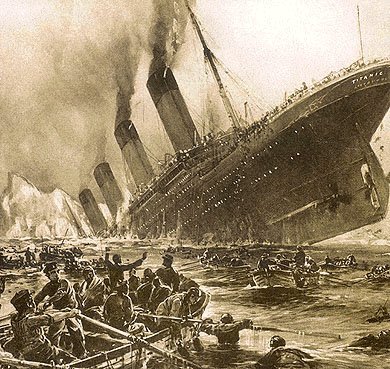
The Titanic was designed to
accommodate different classes of passengers: 1st, 2nd and 3rd class
(commonly referred to as "steerage"). Titanic's passengers
ranged from the rich and famous, to the poor and obscure. Each
passenger class was housed in different areas of the ship and each
experienced different levels of luxury and comfort.  Although
3rd class accommodations were not as elegant as 1st or 2nd class,
they were still very nice, especially compared to other ships.
Although
3rd class accommodations were not as elegant as 1st or 2nd class,
they were still very nice, especially compared to other ships.
The majority of passengers aboard Titanic were emigrants traveling 3rd class. Interestingly, they were also the smallest percentage of passengers saved. It has been argued that steerage class passengers did not have the same chances for survival because they were deemed less important than the other classes and therefore, treated differently. It is believed that locked gates, used to keep the classes segregated, prevented many 3rd class passengers from reaching the boat deck. Remember, there are always 2 sides to every story....
Despite some evidence that 3rd passengers may not have had the same access to the lifeboats as 1st and 2nd class, the official investigations determined that no distinction between passenger classes was made during the loading of lifeboats. Women and children, without discrimination of class, were given preference. The inquiry findings also indicate that there were few physical obstacles preventing 3rd class passengers from accessing the boat deck.
It seems obvious that 1st class passengers would have had the greatest chance of reaching the lifeboats since their accommodations were directly below the boat deck. Even if steerage passengers did have equal opportunity to reach the boat deck, they probably would have had a difficult time finding their way around unfamiliar parts of the ship. Language was also a barrier since many of the emigrants spoke very little English.
How may people were aboard the Titanic? Well, this number varies. Remember, the Titanic did not sail directly from Southampton, England to New York. There were stops in Cherbourg, France and Queenstown (currently known as Cobh), Ireland before setting sail to New York. When most people ask about the number of people on the Titanic, they are usually referring to the number of people on the ship when it collided with the iceberg.
The exact number of passengers on the Titanic at the time of the accident is unclear. It is known that the "official" passenger list contains inaccuracies, omissions and printing errors. The list includes names of people that were never on the ship and is missing names of people that were definitely aboard the ship. Various sources give different numbers, but their numbers only differ by about 30 people. The British Inquiry report lists the total passengers and crew as 2201. The exact number is not as important as the story they tell about the magnitude of this great maritime disaster.
|
|
|
|
|
|
|
|
Note: The following charts are for passengers only.
|
|
|
|
|
|
| Titanic Home | Top of Page |
![]()
Copyright © 1997-1999. All rights reserved.